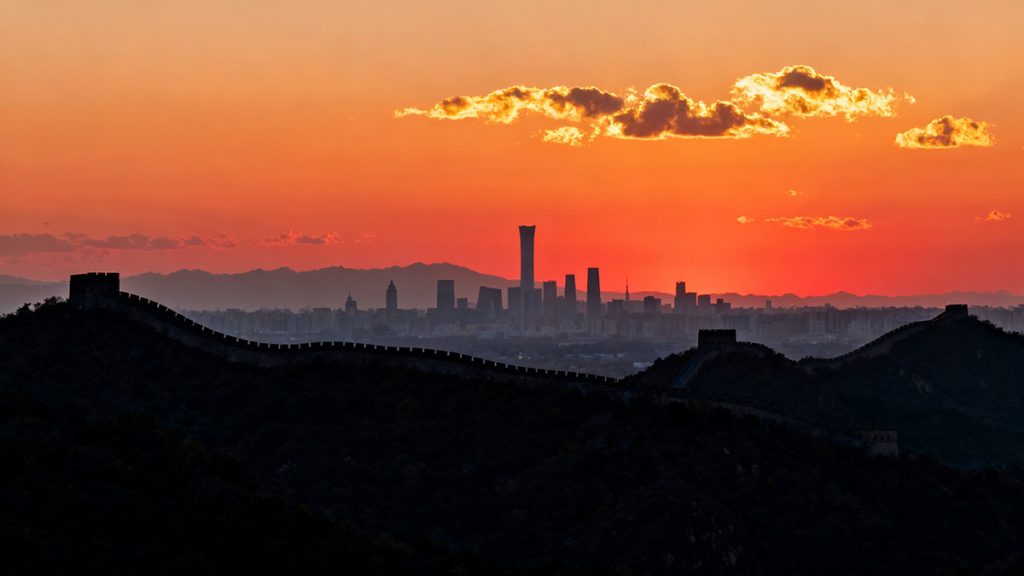Planning a trip to China’s magnificent capital? You’re about to embark on a journey that will shatter every preconception you have about this ancient yet ultra-modern metropolis. Beijing isn’t just another tourist destination—it’s a cultural time machine where 3,000-year-old hutongs neighbor gleaming skyscrapers, where you can feast on imperial cuisine one moment and grab street food from a vendor the next.
Welcome to the most comprehensive Beijing travel guide you’ll find anywhere. Whether you’re a first-time visitor wondering how to navigate the subway system or a culture enthusiast eager to decode the city’s fascinating contradictions, this guide covers everything you need to transform from a bewildered tourist into a confident Beijing explorer.
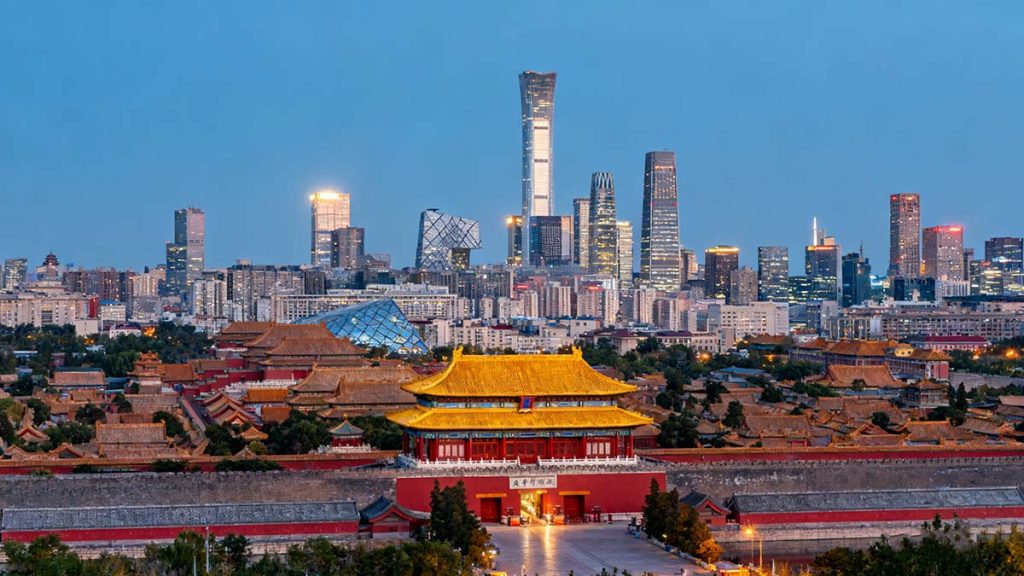
Table of Contents
- Table of Contents
- Quick Beijing Overview
- When to Visit Beijing
- Essential Pre-Trip Planning
- Getting to and Around Beijing
- Where to Stay in Beijing
- Must-See Beijing Attractions
- Beijing Food Scene Guide
- Cultural Insights and Etiquette
- Practical Tips for Foreign Visitors
- Day-by-Day Itinerary Suggestions
- Budget Planning Guide
- Language and Communication
- Final Recommendations and Resources
Quick Beijing Overview
Beijing, home to 21.5 million people, serves as China’s political, educational, and cultural center. This Beijing travel guide begins with a simple truth: the city defies easy categorization. Ancient temples sit meters away from contemporary art galleries, while bicycles share roads with Tesla taxis.
Key Facts:
- Population: 21.5 million (larger than many countries)
- Area: 16,410 km² (about the size of Connecticut)
- Language: Mandarin Chinese (with distinctive Beijing accent)
- Currency: Chinese Yuan (CNY/RMB)
- Time Zone: China Standard Time (UTC+8)
- Climate: Continental monsoon climate with four distinct seasons
What makes Beijing unique isn’t just its size or history—it’s the city’s ability to make every visitor feel simultaneously overwhelmed and enchanted. You might find yourself lost in a maze-like hutong one moment, then standing in the world’s largest public square the next.
When to Visit Beijing
Timing your Beijing travel can make or break your experience. Each season offers distinct advantages and challenges that every comprehensive Beijing travel guide should address.
Spring (March-May): The Sweet Spot
Spring emerges as the optimal choice for most visitors. Temperatures hover between 10-25°C (50-77°F), and the notorious Beijing smog often clears thanks to favorable winds.
Pros:
- Pleasant weather perfect for walking
- Beautiful cherry blossoms in parks
- Lower tourist crowds than summer
- Clear skies ideal for Great Wall visits
Cons:
- Occasional sandstorms from Mongolia
- Pollen season (bring antihistamines)
- Hotel prices start climbing
Summer (June-August): Busy but Vibrant
Summer brings intense heat and humidity, plus monsoon rains. However, it’s also when Beijing truly comes alive.
Pros:
- Longest daylight hours (sunrise at 5 AM)
- Lush green parks and gardens
- Peak festival season
- All attractions fully operational
Cons:
- Sweltering heat (often exceeding 35°C/95°F)
- High humidity and pollution
- Massive crowds at major attractions
- Highest accommodation prices
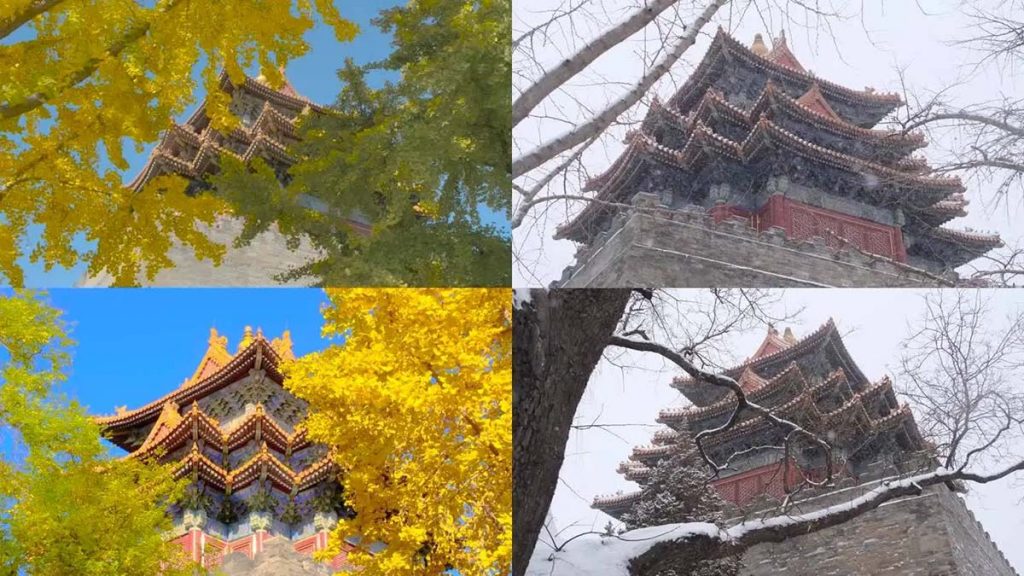
Autumn (September-November): The Hidden Gem
Many Beijing travel guides overlook autumn, but locals consider it the most beautiful season.
Pros:
- Crisp, clear air perfect for photography
- Stunning fall foliage in parks
- Comfortable temperatures (15-25°C/59-77°F)
- Fewer tourists than summer
Cons:
- Weather can be unpredictable
- Some outdoor attractions reduce hours
- Dust storms possible in late autumn
Winter (December-February): For the Adventurous
Winter Beijing challenges visitors with sub-zero temperatures but rewards them with unique experiences.
Pros:
- Crystal-clear skies reveal dramatic architecture
- Frozen lakes become ice skating rinks
- Lowest tourist crowds
- Best hotel deals of the year
Cons:
- Brutal cold (often -10°C/14°F or lower)
- Some attractions have limited access
- Air quality can deteriorate
Essential Pre-Trip Planning
Visa Requirements
Every Beijing travel guide must start here: you need a visa. Period. The process varies by nationality, 40+ countries visa free, 50+ countries transit visa free.
Check out Complete China Visa Guide.
Required Documents:
- Passport valid for at least 6 months
- Completed application form with recent photo
- Round-trip flight bookings
- Hotel reservations or invitation letter
- Proof of financial means
Processing Time: 4-7 business days (expedited service available) Cost: $140-200 USD depending on nationality
Pro Tip: Apply 2-3 months before travel. Chinese consulates can be unpredictable with processing times.
Health and Safety Preparations
Beijing poses few serious health risks, but preparation prevents problems.
Recommended Vaccinations:
- Routine vaccines (MMR, measles, etc.)
- Hepatitis A and B
- Japanese Encephalitis (if traveling to rural areas)
- Typhoid (optional but recommended)
Health Insurance: Essential. Chinese hospitals require upfront payment, often in cash.
Money Matters
Beijing operates on an increasingly cashless society, but foreign visitors face unique challenges.
Payment Methods:
- WeChat Pay/Alipay: Dominant and supports international credit cards
- Cash: Still widely accepted, carry small bills
- Credit Cards: Accepted at major hotels and some restaurants
- International Cards: Limited acceptance outside tourist areas
Currency Exchange:
- Bank of China offers best rates
- Avoid airport exchanges (poor rates)
- Hotels offer convenience but higher fees
- ATMs widely available but check international fees
Getting to and Around Beijing
Arriving in Beijing
Beijing Capital International Airport (PEK) Located 32km northeast of the city center, PEK handles most international flights.
Transportation Options:
- Airport Express Train: Fastest option (28 minutes to Dongzhimen)
- Taxi: 45-90 minutes depending on traffic (¥80-150)
- Airport Bus: Multiple routes serving different areas (¥20-30)
- Didi (Chinese Uber): Convenient but requires app setup
Beijing Daxing International Airport (PKX) The newer, southern airport serves increasing international routes.
Transportation Options:
- Daxing Airport Express: Direct to city center (45 minutes)
- Taxi: 60-120 minutes to downtown (¥100-200)
- Airport Bus: Several routes available (¥30-40)
Navigating Beijing’s Transportation System
Beijing Subway: Your Best Friend
Beijing’s subway system spans 783km across 27 lines—larger than London’s entire network. This Beijing travel guide considers it essential for every visitor.
Key Features:
- Operates 5:00 AM – 11:30 PM daily
- Distance-based fare system (¥3-9 depending on distance)
- English announcements on most lines
- Mobile payment increasingly accepted
Essential Lines for Tourists:
- Line 1: East-West through city center (Forbidden City area)
- Line 2: Ring line connecting major attractions
- Line 4: North-South route to Summer Palace
- Line 8: Olympic Park and northern attractions
- Line 10: Circle line connecting business districts
Pro Tips:
- Download Beijing Subway app for real-time info
- Avoid rush hours (7-9 AM, 5-7 PM)
- Keep ticket until exit—you’ll need it
- Platform announcements often in Chinese only
Taxis and Ride-Sharing
Taxis remain abundant, but communication barriers can frustrate foreign visitors.
Regular Taxis:
- Base fare: ¥13 for first 3km
- Additional: ¥2.3 per km
- Night surcharge: 20% (11 PM – 5 AM)
- Traffic jam fees apply
Ride-Sharing Apps:
- Didi: Chinese equivalent of Uber
- Uber: Limited availability
- Setup requires: Chinese phone number and payment method
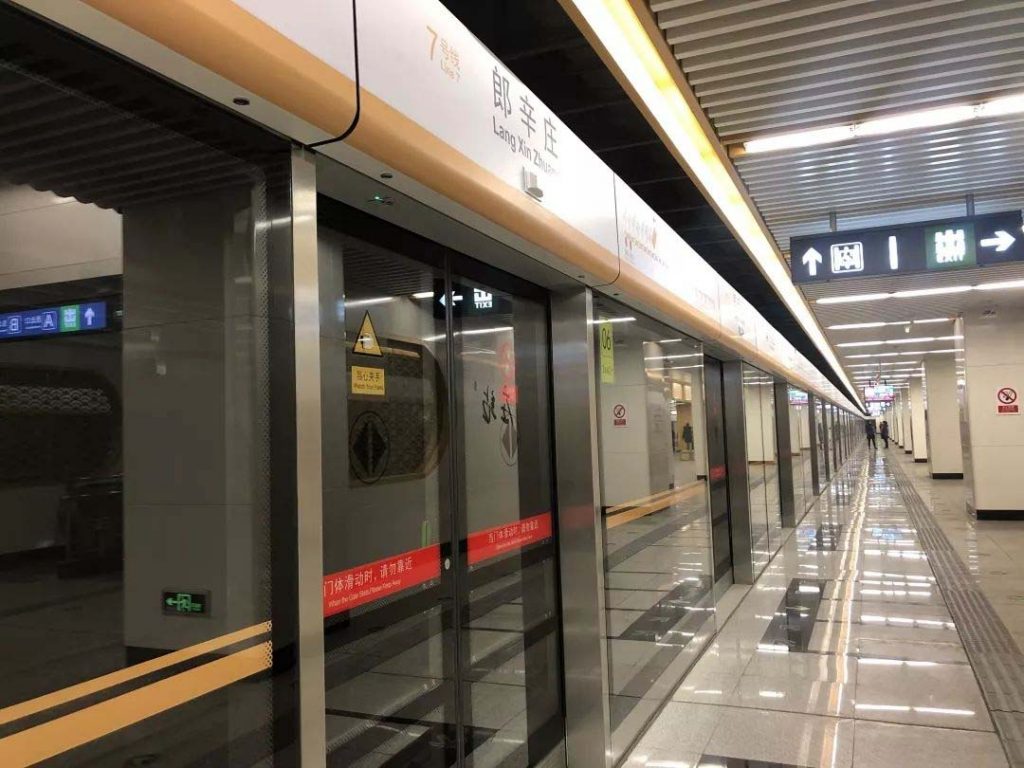
Bicycles and E-Scooters
Beijing’s bike-sharing revolution offers tourists a unique perspective on the city.
Bike-Sharing Services:
- Mobike: Yellow bikes, requires app registration
- Ofo: Yellow bikes (service reduced)
- Hellobike: Blue bikes with GPS tracking
Cost: ¥1-2 per 30 minutes Requirements: Smartphone app, deposit (usually ¥99-299)
Cycling Tips:
- Use dedicated bike lanes (usually separated)
- Beijing traffic can be chaotic for newcomers
- Avoid major arterial roads during rush hour
- Perfect for exploring hutongs at slow pace
Where to Stay in Beijing
Choosing accommodation location dramatically impacts your Beijing travel experience. This Beijing travel guide breaks down the city’s key neighborhoods for visitors.
Dongcheng District: Historic Heart
The historic center houses Beijing’s most famous attractions within walking distance.
Best For: First-time visitors, culture enthusiasts, luxury travelers Attractions Nearby: Forbidden City, Tiananmen Square, Temple of Heaven Accommodation Types: Luxury hotels, boutique properties, courtyard hotels
Advantages:
- Walking distance to major attractions
- Excellent subway connections
- Traditional hutong neighborhoods
- High-end shopping and dining
Disadvantages:
- Higher prices across all categories
- Tourist crowds during peak seasons
- Limited nightlife options
- Traffic congestion
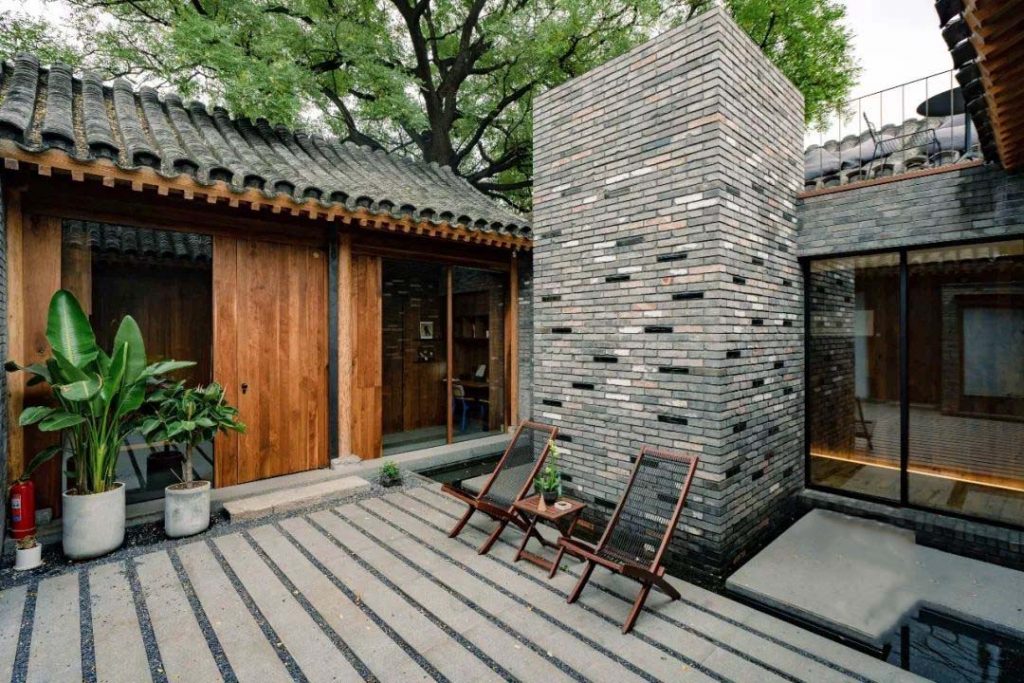
Chaoyang District: Modern Beijing
Beijing’s business and expat hub offers contemporary amenities and international dining.
Best For: Business travelers, modern luxury seekers, nightlife enthusiasts Attractions Nearby: CBD towers, Sanlitun bars, embassy district Accommodation Types: International hotel chains, serviced apartments
Advantages:
- Modern amenities and services
- English widely spoken
- Vibrant nightlife scene
- International restaurant options
Disadvantages:
- Further from historic attractions
- More expensive dining and drinking
- Less authentic Beijing experience
- Traffic-heavy during business hours
Xicheng District: Balanced Choice
A middle ground offering both historic sites and modern conveniences.
Best For: Mid-range travelers, families, longer stays Attractions Nearby: Beihai Park, Prince Gong’s Mansion, Shichahai Lakes Accommodation Types: Mid-range hotels, guesthouses, homestays
Hutong Homestays: Authentic Experience
Traditional courtyard houses converted to guest accommodations offer unparalleled cultural immersion.
What to Expect:
- Shared courtyards with other guests
- Traditional architecture and design
- Local family interactions
- Basic but clean facilities
Pros:
- Authentic Beijing living experience
- Lower costs than hotels
- Cultural learning opportunities
- Unique photo opportunities
Cons:
- Limited privacy compared to hotels
- Basic amenities (shared bathrooms common)
- Language barriers with hosts
- Noise from courtyard activities
Must-See Beijing Attractions
This Beijing travel guide prioritizes attractions by cultural significance and visitor experience rather than simple popularity rankings.
Tier 1: Absolutely Essential (Allow Full Days)
The Forbidden City (Palace Museum)
The world’s largest palace complex demands respect, patience, and comfortable shoes.
Why Visit: 500 years of imperial history condensed into 180 acres Time Needed: Full day (6-8 hours minimum) Best Strategy: Book tickets online, arrive early, follow suggested route Cultural Impact: Understanding China’s imperial legacy becomes impossible without this experience
Visitor Tips:
- Advance booking essential (tickets.dpm.org.cn)
- Audio guide or tour highly recommended
- Wear comfortable walking shoes
- Bring water and snacks (limited food inside)
- Best photography light: early morning
The Great Wall (Multiple Sections)
Every Beijing travel guide features the Wall, but choosing the right section makes the difference between magical and miserable.
Mutianyu Section (Most Recommended):
- Distance: 70km from Beijing (1.5 hours each way)
- Features: Cable car access, restored sections, fewer crowds
- Difficulty: Moderate hiking, manageable for most fitness levels
- Best Time: Early morning or late afternoon
Badaling Section (Most Popular):
- Distance: 70km northwest
- Features: Most restored, easiest access, highest crowds
- Difficulty: Easy walking, wheelchair accessible sections
- Best Time: Avoid weekends and holidays
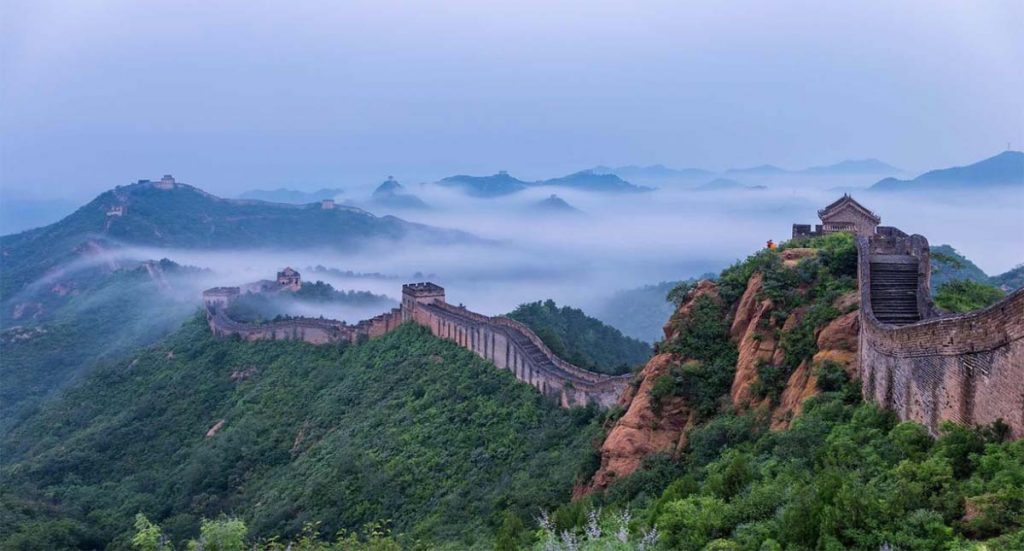
Jinshanling Section (Most Dramatic):
- Distance: 130km from Beijing
- Features: Original Ming Dynasty construction, wild sections
- Difficulty: Challenging hikes, unrestored areas
- Best Time: Spring and autumn for clearest views
Temple of Heaven
This circular temple complex represents the pinnacle of Chinese architecture and philosophy.
Why Visit: Perfect harmony of architecture, nature, and spiritual significance Time Needed: 3-4 hours including park exploration Best Experience: Dawn visit to witness locals practicing tai chi Cultural Insight: Understanding Chinese concepts of heaven and earth
Tier 2: Highly Recommended (Half-Day Visits)
Summer Palace
The imperial garden retreat showcases Chinese landscape design principles.
Highlights:
- Kunming Lake boat rides
- Traditional Chinese garden design
- Imperial architecture specimens
- Seasonal flower displays
Best Strategy: Rent a boat, walk the Long Corridor, climb Longevity Hill for panoramic views
Tiananmen Square
The world’s largest public square carries enormous historical and political significance.
What to Know:
- Security checks required for entry
- Photography restrictions in some areas
- Early morning flag-raising ceremony
- Adjacent to Forbidden City entrance
Lama Temple (Yonghe Temple)
Beijing’s most active Buddhist temple offers spiritual respite from urban chaos.
Experience:
- Working monastery with active monks
- Towering 18-meter Buddha statue
- Incense-filled prayer halls
- Traditional Tibetan Buddhist architecture
Tier 3: Worth Considering (2-3 Hours Each)
Beihai Park
Central Beijing’s most beautiful park combines imperial gardens with local life.
Prince Gong’s Mansion
The best-preserved Qing Dynasty mansion reveals aristocratic lifestyle.
798 Art District
Contemporary art galleries in repurposed industrial buildings.
Hutong Neighborhoods
Traditional alleyway communities offering authentic local life glimpses.
Top 17 Must-See Beijing Attractions
Beijing Food Scene Guide
Beijing’s culinary landscape extends far beyond Peking duck, though every Beijing travel guide should address this iconic dish properly.
Understanding Beijing Cuisine Philosophy
Beijing food reflects the city’s role as China’s political center—imperial influences meet street-level practicality. Northern Chinese cuisine emphasizes wheat over rice, hearty flavors over delicate ones, and communal sharing over individual portions.
Key Characteristics:
- Wheat-based dishes (noodles, dumplings, pancakes)
- Rich, savory flavors with generous oil and salt
- Seasonal ingredients reflecting harsh northern winters
- Imperial dishes alongside humble street food
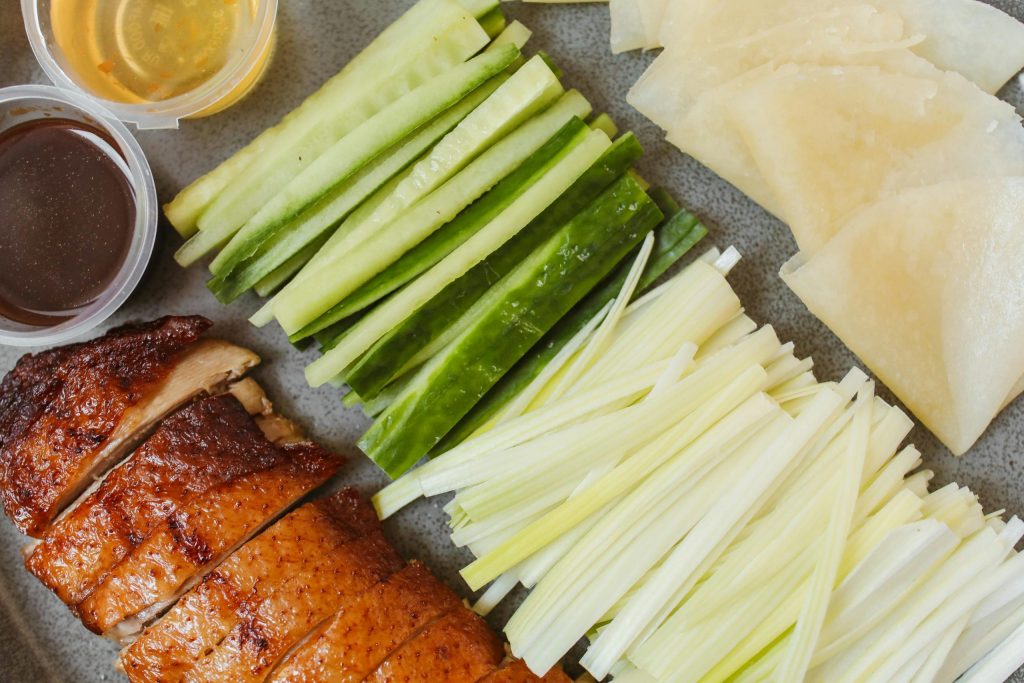
Must-Try Beijing Dishes
Peking Duck (Beijing Kaoya)
The city’s signature dish requires ritual and respect.
What Makes It Special:
- Crispy skin achieved through specific roasting techniques
- Served with thin pancakes, spring onions, and sweet bean sauce
- Traditional carving presentation tableside
- Different restaurants offer varying preparation styles
Where to Try:
- Quanjude: Historic chain, touristy but reliable
- Da Dong: Modern interpretation, innovative presentations
- Liqun Roast Duck: Hutong hole-in-the-wall, authentic atmosphere
- Dadong: Upscale version with contemporary twists
Jianbing (Breakfast Crepe)
Street breakfast that challenges Western morning food concepts.
Components:
- Thin crepe made from mung bean and wheat flour
- Egg cracked and spread on surface
- Crispy wonton crackers (baocui)
- Fresh cilantro, pickled vegetables
- Sweet and spicy sauces
Where to Find: Street vendors throughout the city, particularly near subway stations
Beijing Zhajiangmian (Noodles with Soybean Paste)
The city’s comfort food par excellence.
Description:
- Hand-pulled wheat noodles
- Rich soybean paste sauce with ground pork
- Fresh cucumber, radish, and bean sprout garnish
- Mixed at the table for optimal flavor distribution
Hot Pot (Beijing Style)
Northern Chinese hot pot differs significantly from Sichuan versions.
Beijing Characteristics:
- Clearer, milder broths emphasizing ingredient flavors
- Sesame paste-based dipping sauces
- Emphasis on lamb and mutton
- Social dining experience lasting 2-3 hours
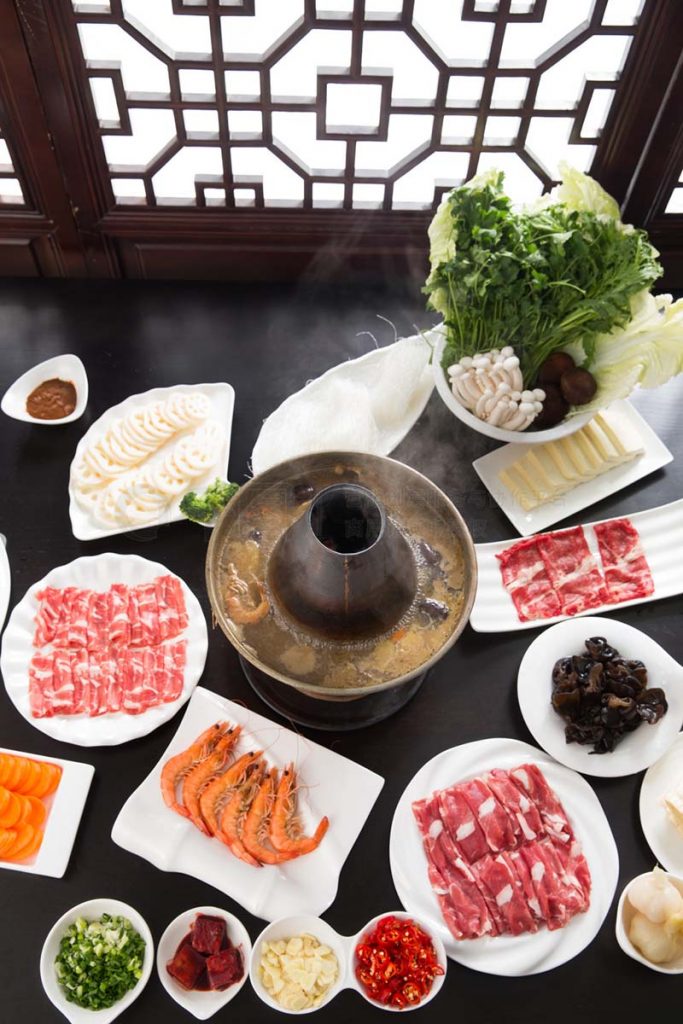
Street Food Adventures
Wangfujing Snack Street
Tourist-oriented but offers wide variety sampling opportunities.
Must-Try Items:
- Candied hawthorn (tanghulu)
- Grilled squid and starfish
- Traditional Beijing yogurt
- Various regional Chinese snacks
Reality Check: Prices higher than local markets, but convenient for trying multiple items
Donghuamen Night Market
More authentic than Wangfujing, favored by locals.
Specialties:
- Fresh-made dumplings
- Grilled meat skewers
- Seasonal fruit and vegetables
- Regional specialties from vendors’ home provinces
Ghost Street (Gui Jie)
24-hour dining district specializing in spicy Sichuan cuisine and late-night dining.
Best Time: After 10 PM when the atmosphere becomes electric Specialties: Spicy crayfish, hot pot, regional Chinese cuisines Cultural Note: Popular with young locals and night shift workers
Fine Dining and Imperial Cuisine
Imperial Court Cuisine
Restaurants recreating dishes once served to emperors.
Characteristics:
- Elaborate presentation with historical significance
- Expensive ingredients (bird’s nest, shark fin, premium seafood)
- Complex preparation methods passed down through generations
- Formal service protocols matching imperial customs
Recommended Restaurants:
- Fangshan Restaurant: Located in Beihai Park, historical recipes
- Li Qun Roast Duck Restaurant: Traditional Peking duck specialist
- Capital M: Modern interpretation of Chinese classics
Vegetarian Options
Buddhist temple cuisine and modern vegetarian restaurants serve plant-based visitors.
Temple Restaurants:
- Focus on mock meat dishes using tofu and wheat gluten
- Seasonal vegetables prepared according to Buddhist principles
- No onions, garlic, or other “stimulating” ingredients
- Peaceful dining environments within temple complexes
Food Markets and Shopping
Sanyuanli Market
Local wet market offering ingredients and prepared foods.
Jenny Lou’s
Expat-friendly supermarket chain with international products.
Carrefour and Walmart
International supermarket chains with familiar Western products.
Beijing Food Guide: 15 Must-Try Local Dishes for First-Time Visitors
Cultural Insights and Etiquette
Understanding Beijing’s cultural nuances transforms tourists into respectful visitors. This Beijing travel guide addresses both obvious customs and subtle social rules.
Basic Social Etiquette
Greetings and Interactions
Chinese greeting customs differ significantly from Western handshaking culture.
Appropriate Greetings:
- Slight bow or nod for formal situations
- “Ni hao” (hello) works universally
- Business cards exchanged with both hands
- Wait for older person or higher status individual to initiate contact
Personal Space:
- Chinese concept of personal space differs from Western norms
- Crowding in public transportation considered normal
- Pushing in lines more acceptable than in Western cultures
- Physical contact between strangers generally avoided
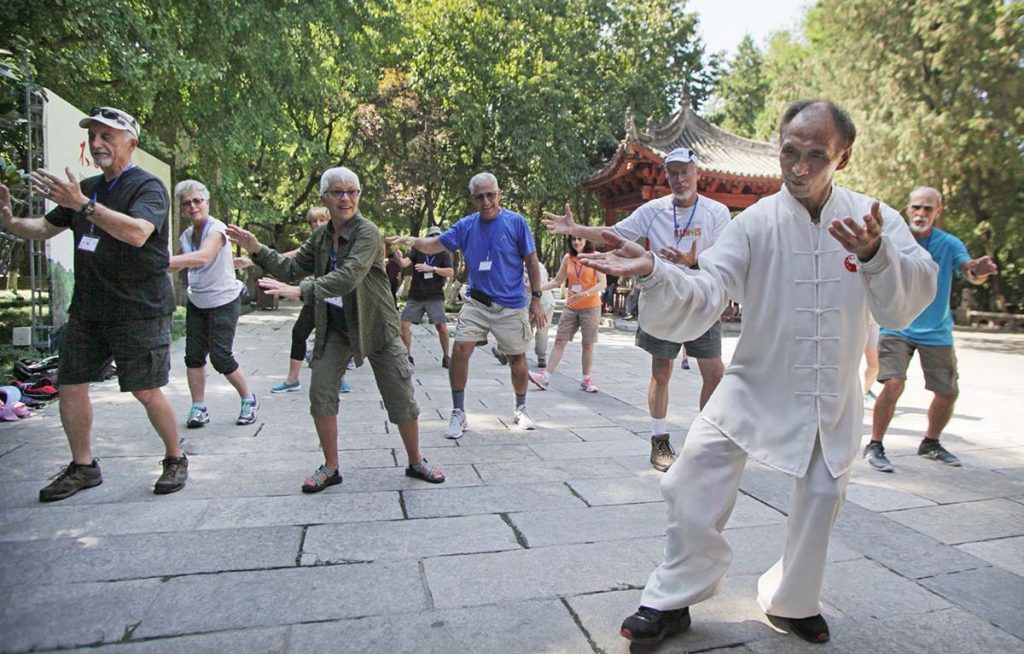
Face and Harmony (Mianzi and Hexie)
Two crucial concepts affecting all social interactions.
Face (Mianzi):
- Social reputation and dignity paramount
- Avoid causing public embarrassment
- Compliments appreciated, but excessive praise may embarrass
- Mistakes should be addressed privately when possible
Harmony (Hexie):
- Group cohesion prioritized over individual expression
- Indirect communication preferred
- Conflict resolution through mediation rather than confrontation
- Patience valued over aggressive problem-solving
Dining Etiquette
Table Manners
Chinese dining emphasizes community sharing over individual portions.
Essential Rules:
- Wait for host to begin eating
- Serve others before serving yourself
- Try all dishes offered (small portions acceptable)
- Leave some food on plate (clean plate suggests insufficient food provided)
- Tea pouring hierarchy (serve elders and guests first)
Chopstick Etiquette:
- Never stick chopsticks upright in rice bowl
- Don’t point with chopsticks
- Place chopsticks on rest, not across bowl
- Use serving chopsticks when available
Gift-Giving and Reciprocity
Chinese gift culture involves complex reciprocity expectations.
Appropriate Gifts:
- Small items from your home country
- High-quality alcohol or tea
- Flowers (avoid white or yellow)
- Books about your culture
Gifts to Avoid:
- Clocks (associated with death)
- White flowers (funeral association)
- Knives or sharp objects
- Items in sets of four (unlucky number)
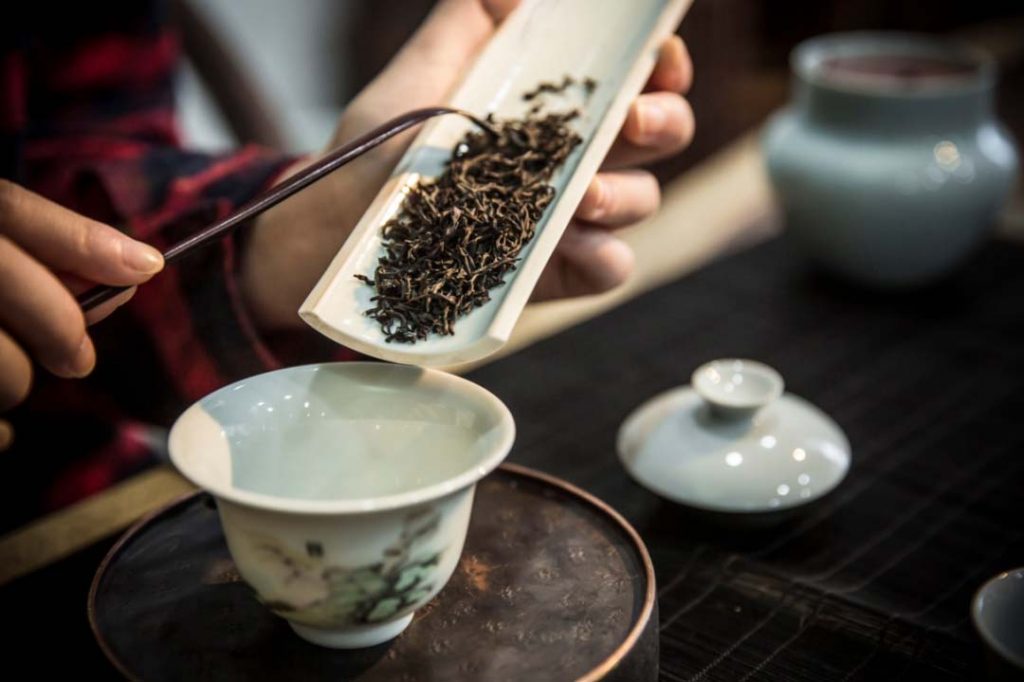
Religious and Spiritual Sites
Temple Behavior
Buddhist and Taoist temples require respectful conduct.
Dress Code:
- Conservative clothing covering shoulders and knees
- Remove hats and sunglasses
- Quiet, respectful demeanor
- Photography may be restricted in certain areas
Proper Conduct:
- Follow designated pathways
- Don’t touch religious artifacts
- Observe rather than participate unless invited
- Small donations appreciated but not required
Incense and Prayer Etiquette
Many visitors want to participate in local spiritual practices.
If You Choose to Participate:
- Purchase incense from temple vendors
- Light three sticks (traditional number)
- Hold with both hands while bowing
- Place in designated incense burners
- Make wishes silently and respectfully
Photography Etiquette
When Photography Is Welcome
Most Beijing attractions encourage photography with guidelines.
Generally Acceptable:
- Exterior shots of all major attractions
- Street scenes and architecture
- Food and market scenes
- Landscapes and parks
Sensitive Photography Areas
Some locations restrict or prohibit photography entirely.
Restricted Areas:
- Military installations and personnel
- Government buildings beyond tourist areas
- Interior portions of some temples
- People without permission (especially children)
Photography Tips:
- Ask permission before photographing individuals
- Respect “no photography” signs strictly
- Be discrete in crowded areas
- Avoid flash photography in museums and temples
Modern Social Norms
Technology and Social Media
Beijing’s digital culture creates unique social situations.
WeChat Culture:
- Central to Chinese social interaction
- QR codes used for payments and contact exchange
- Group chats common for organizing activities
- Moments feature functions like Facebook timeline
Internet Restrictions:
- VPN may be necessary for Western social media
- Google services generally blocked
- Local alternatives widely used (Baidu, WeChat, Weibo)
- Hotel WiFi may offer different access levels
Environmental Awareness
Growing environmental consciousness affects daily life.
Recycling and Waste:
- Sorting requirements increasingly common
- Plastic bag fees in many stores
- Public recycling bins available but inconsistently marked
- Air quality apps widely used by locals
Practical Tips for Foreign Visitors
Communication Strategies
Language Barriers
Most Beijing locals speak limited English, but communication strategies can bridge gaps.
Useful Phrases:
- “Ni hao” (Hello)
- “Xie xie” (Thank you)
- “Bu keqi” (You’re welcome)
- “Duoshao qian?” (How much?)
- “Wo bu dong” (I don’t understand)
Communication Tools:
- Google Translate app (offline Chinese download)
- Pleco dictionary app
- Written address cards from hotel
- Photo communication for food ordering
Emergency Contacts and Information
Essential numbers and protocols every visitor should know.
Important Numbers:
- Emergency Services: 110 (Police), 120 (Medical), 119 (Fire)
- Tourist Hotline: 12301
- Your Embassy/Consulate: Research and save before travel
Health and Safety
Air Quality Management
Beijing’s air quality varies dramatically by season and weather patterns.
Monitoring Tools:
- AirVisual app for real-time air quality
- Weather apps with pollution forecasts
- Hotel concierge daily updates
Protection Strategies:
- N95 or KN95 masks during high pollution days
- Indoor activities when AQI exceeds 200
- Air purifier in accommodation if staying long-term
- Increased water intake during polluted periods
Medical Care for Foreigners
Beijing offers excellent medical care, but navigation requires preparation.
International Hospitals:
- Beijing United Family Hospital
- International SOS
- Oasis International Hospital
- Peking Union Medical College Hospital (VIP section)
Pharmacy Access:
- Chain pharmacies widely available
- Western medications may require prescriptions
- Traditional Chinese medicine shops common
- Hospital pharmacies typically best-stocked
Shopping and Bargaining
Markets vs. Malls
Beijing offers everything from luxury malls to chaotic markets.
Luxury Shopping:
- Wangfujing Street pedestrian area
- Sanlitun shopping district
- SKP and other high-end malls
- Fixed prices, international brands
Traditional Markets:
- Silk Street Market (tourist-oriented)
- Hongqiao Market (pearls and crafts)
- Panjiayuan Antique Market (weekends best)
- Bargaining expected and encouraged
Bargaining Strategies
Negotiation forms part of Chinese shopping culture in appropriate venues.
Basic Bargaining Rules:
- Start at 30-50% of asking price
- Show willingness to walk away
- Remain friendly and patient
- Cash payments often secure better deals
Items Worth Bargaining:
- Silk products and clothing
- Handicrafts and souvenirs
- Electronics (check authenticity)
- Artwork and antiques
Banking and Money
ATM Access and Fees
International ATM access varies by bank and location.
Best ATM Networks:
- Bank of China (most international friendly)
- ICBC (widespread but variable)
- China Construction Bank
- Agricultural Bank of China
Fee Structure:
- Chinese bank fees: ¥15-25 per transaction
- Your home bank fees: varies significantly
- Exchange rate margins: 1-3% typical
- Daily withdrawal limits: ¥2,500-5,000 common
Mobile Payment Adaptation
While challenging for foreigners, mobile payments dominate Beijing commerce.
Setup Requirements:
- Chinese bank account (difficult for tourists)
- Chinese phone number
- Identity verification
- App registration process
Alternatives for Tourists:
- Cash remains widely accepted
- International credit cards at major establishments
- Hotel payment services
- Tour group payment arrangements
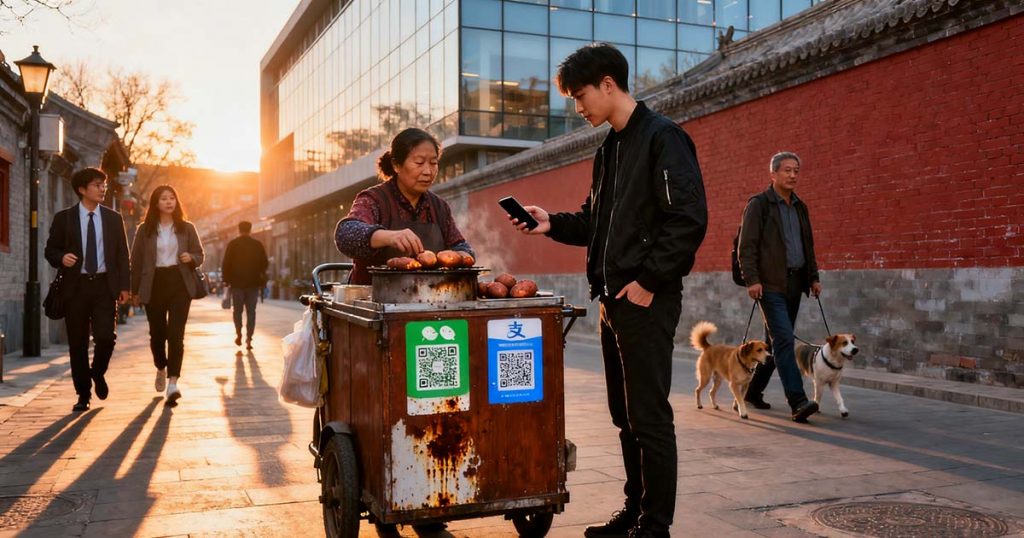
Connectivity and Internet
Internet Access Strategies
China’s internet restrictions require preparation for foreign visitors.
VPN Considerations:
- Research legal status and functionality before travel
- Download and test before arriving in China
- Have multiple backup options
- Hotel WiFi may offer different access levels
Local Internet Services:
- Most hotels offer free WiFi
- Public WiFi available in malls and restaurants
- Internet cafes still exist but declining
- Mobile data plans available for longer stays
Seasonal Considerations
Summer Heat Management
Beijing summers can be brutally hot and humid.
Cooling Strategies:
- Mall-hopping during peak heat hours
- Underground shopping areas
- Swimming pools in hotels and clubs
- Traditional Chinese cooling foods
Winter Cold Preparation
Beijing winters test unprepared visitors.
Warmth Strategies:
- Layered clothing system
- Quality boots with grip for icy sidewalks
- Hand and foot warmers readily available
- Indoor attractions for extremely cold days
Day-by-Day Itinerary Suggestions
3-Day Beijing Highlights (First-Time Visitors)
Day 1: Imperial Beijing
Morning (8:00 AM – 12:00 PM):
- Early arrival at Forbidden City (pre-booked tickets essential)
- Audio guide or private guide recommended
- Focus on major halls and courtyards
- Photography breaks in designated areas
Afternoon (12:00 PM – 6:00 PM):
- Lunch at nearby Donghuamen area
- Walk through Tiananmen Square
- Explore Zhongshan Park or take rest at hotel
- Evening stroll through Wangfujing pedestrian street
Evening (6:00 PM onwards):
- Peking duck dinner at Quanjude or Da Dong
- Return to accommodation early (jet lag management)
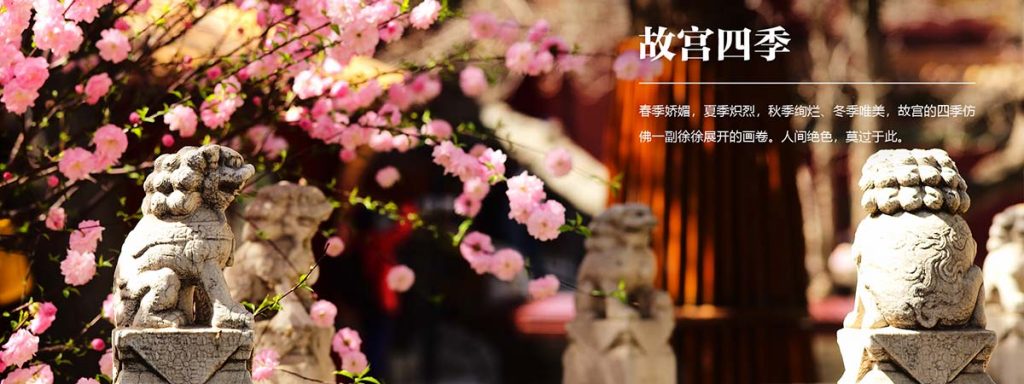
Day 2: Great Wall Adventure
Early Morning (6:30 AM departure):
- Hotel pickup for Mutianyu Great Wall tour
- Cable car to main wall sections
- 2-3 hours hiking and photography
- Lunch at local restaurant
Afternoon Return (3:00 PM – 7:00 PM):
- Return journey to Beijing
- Rest and recovery time
- Light dinner near accommodation
- Early rest for next day’s activities
Day 3: Cultural Immersion
Morning (9:00 AM – 1:00 PM):
- Temple of Heaven early visit
- Observe local tai chi and exercise groups
- Explore circular temple architecture
- Traditional Chinese lunch
Afternoon (2:00 PM – 6:00 PM):
- Hutong rickshaw tour or walking exploration
- Visit local family courtyard (if arranged)
- Traditional craft workshop experience
- Tea ceremony participation
Evening (6:00 PM onwards):
- Ghost Street food tour
- Sample multiple regional cuisines
- Experience Beijing nightlife culture
5-Day Beijing Deep Dive
Days 1-3: Follow 3-day itinerary above
Day 4: Gardens and Parks
Morning:
- Summer Palace visit (full morning)
- Boat ride on Kunming Lake
- Long Corridor walk and photography
Afternoon:
- Beihai Park exploration
- Traditional Chinese garden design study
- Jade Islet climbing for panoramic views
Evening:
- Shichahai Lakes area
- Bar street exploration
- Local nightlife experience
Day 5: Modern Beijing and Departure Prep
Morning:
- 798 Art District contemporary art galleries
- Modern Chinese culture exploration
- Shopping for authentic souvenirs
Afternoon:
- Olympic Park and Bird’s Nest exterior
- Final shopping at Silk Street Market
- Departure preparation and packing
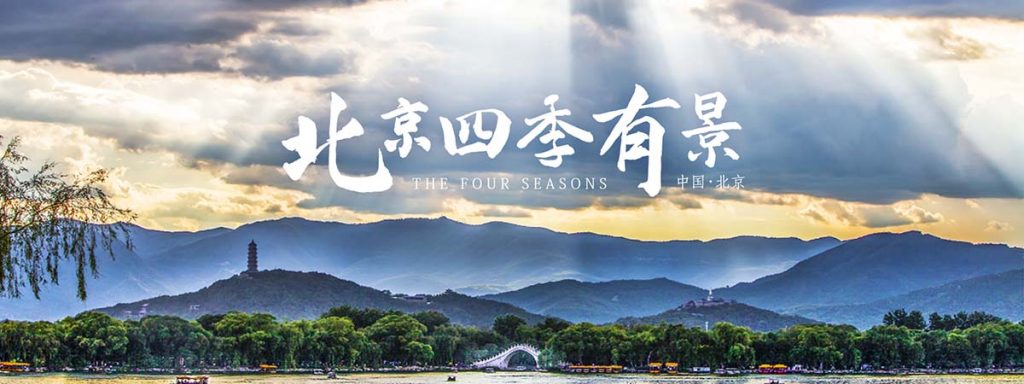
7-Day Beijing Plus Surroundings
Days 1-5: Follow 5-day itinerary
Day 6: Day Trip Options
Option A: Chengde Imperial Resort (2.5 hours by train)
- UNESCO World Heritage mountain resort
- Qing Dynasty summer palace
- Mongolian and Tibetan architectural influences
Option B: Tianjin Port City (30 minutes by high-speed rail)
- European colonial architecture exploration
- Traditional Chinese street food scene
- Haihe River waterfront district
- Same-day return to Beijing
Option C: Longqing Gorge (2 hours by bus)
- Natural scenery escape from urban environment
- Cable car rides over dramatic landscapes
- Ice festival in winter months
- Boat trips during warmer seasons
Day 7: Relaxation and Departure
Morning:
- Lama Temple spiritual visit
- Final souvenir shopping
- Luggage storage and checkout
Afternoon:
- Relaxing tea house experience
- Traditional Chinese massage
- Airport departure preparation
Specialized Interest Itineraries
Food Lover’s 4-Day Beijing
Day 1: Imperial and High-End Cuisine
- Morning cooking class learning dumpling techniques
- Afternoon fine dining at Capital M
- Evening Peking duck experience at Da Dong
Day 2: Street Food Adventure
- Morning jianbing hunt at multiple vendors
- Afternoon Donghuamen Night Market exploration
- Evening Ghost Street spicy food crawl
Day 3: Regional Chinese Cuisines in Beijing
- Morning Sichuan restaurant experience
- Afternoon Xinjiang cuisine (Central Asian influences)
- Evening Cantonese dim sum dinner
Day 4: Traditional and Modern Fusion
- Morning traditional tea ceremony
- Afternoon modern molecular gastronomy restaurant
- Evening local family dinner arrangement
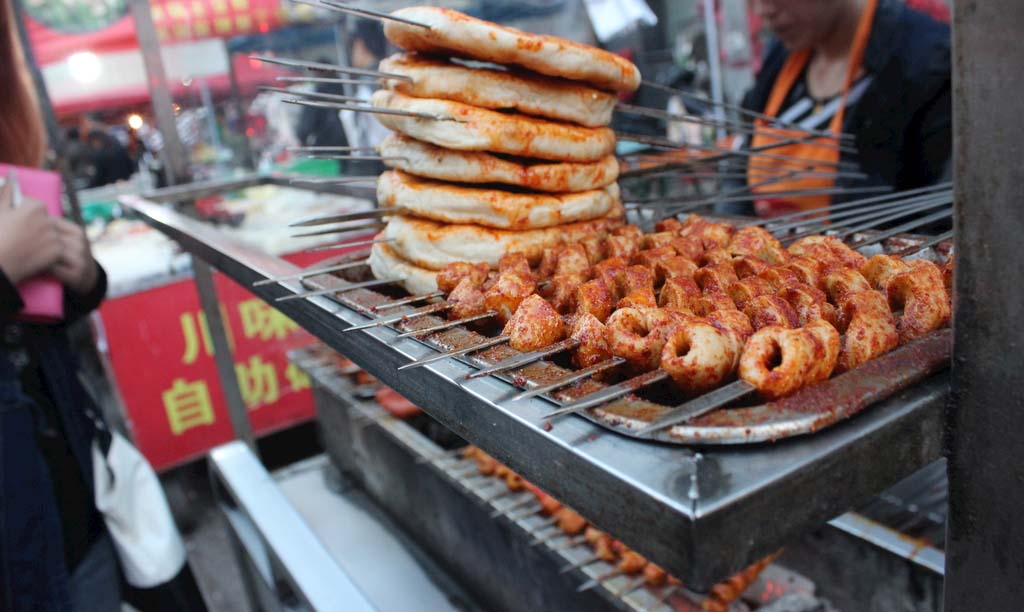
Culture and History Enthusiast 5-Day Plan
Day 1: Ancient Imperial Power
- Extended Forbidden City exploration with expert guide
- Afternoon at National Museum of China
- Evening traditional Peking Opera performance
Day 2: Religious and Philosophical Sites
- Morning at Lama Temple with Buddhist ceremony observation
- Afternoon Confucius Temple and Imperial Academy
- Evening meditation session arrangement
Day 3: Traditional Architecture and Gardens
- Morning Summer Palace detailed architectural tour
- Afternoon Prince Gong’s Mansion
- Evening traditional courtyard restaurant
Day 4: Hutong Culture Deep Dive
- Morning hutong walking tour with local resident guide
- Afternoon traditional craft workshops
- Evening local family dinner and cultural exchange
Day 5: Modern China Understanding
- Morning National Art Museum contemporary exhibitions
- Afternoon 798 Art District with gallery owner meetings
- Evening discussion with local artists and intellectuals
Budget Planning Guide
Daily Budget Categories
Budget Traveler ($50-80 USD per day)
Accommodation: Hostel dorm or budget hotel (¥150-300/$25-45) Food: Street food and local restaurants (¥100-150/$15-22) Transportation: Subway and buses (¥20-40/$3-6) Attractions: Major sites with student discounts (¥100-200/$15-30) Miscellaneous: Souvenirs and incidentals (¥50-100/$8-15)
Money-Saving Strategies:
- Cook breakfast at hostel when possible
- Use subway system exclusively
- Visit free parks and temples
- Shop at local markets rather than tourist areas
- Join free walking tours when available
Mid-Range Traveler ($100-200 USD per day)
Accommodation: 3-4 star hotel or boutique property (¥400-800/$60-120) Food: Mix of local and international restaurants (¥200-400/$30-60) Transportation: Taxis and subway combination (¥50-100/$8-15) Attractions: All major sites plus some guided tours (¥200-400/$30-60) Miscellaneous: Shopping and entertainment (¥150-300/$22-45)
Value Optimization:
- Book hotels with breakfast included
- Use ride-sharing apps for efficiency
- Mix guided tours with independent exploration
- Shop at both markets and malls
- Include some cultural performances
Luxury Traveler ($300+ USD per day)
Accommodation: 5-star international hotels (¥1500+/$225+) Food: Fine dining and hotel restaurants (¥500+/$75+) Transportation: Private cars and premium services (¥200+/$30+) Attractions: Private guides and exclusive experiences (¥500+/$75+) Miscellaneous: High-end shopping and spa services (¥500+/$75+)
Luxury Enhancements:
- Suite accommodations with concierge services
- Michelin-starred restaurant reservations
- Private Great Wall tours with photographer
- VIP museum and attraction access
- Personal shopping and cultural guides
Cost Breakdown by Category
Accommodation Pricing Ranges
Hostels: ¥80-200 ($12-30) per bed in dormitory Budget Hotels: ¥200-400 ($30-60) per double room Mid-Range Hotels: ¥500-1200 ($75-180) per double room Luxury Hotels: ¥1500-5000+ ($225-750+) per double room Hutong Homestays: ¥300-600 ($45-90) per double room
Food Costs by Dining Type
Street Food: ¥5-20 ($1-3) per item Local Restaurants: ¥30-80 ($5-12) per person per meal Mid-Range Restaurants: ¥100-300 ($15-45) per person Fine Dining: ¥400-1000+ ($60-150+) per person International Fast Food: ¥25-50 ($4-8) per meal
Transportation Expenses
Subway: ¥3-9 ($0.50-1.50) per trip Bus: ¥2-5 ($0.30-0.75) per trip Taxi Base Fare: ¥13 ($2) plus distance charges Airport Express: ¥25-35 ($4-5) per trip Great Wall Tour: ¥200-800 ($30-120) depending on service level
Attraction Entry Fees
Forbidden City: ¥60 ($9) peak season, ¥40 ($6) off-season Great Wall (Mutianyu): ¥45 ($7) plus cable car ¥100 ($15) Summer Palace: ¥30 ($4.50) park entry plus ¥20 ($3) building access Temple of Heaven: ¥35 ($5) park plus building fees Lama Temple: ¥25 ($4) entry fee
Money-Saving Strategies
Free and Low-Cost Activities
Completely Free:
- Tiananmen Square walking
- Hutong neighborhood exploration
- Park exercises with locals (tai chi, dancing)
- Window shopping in major districts
- People watching in public spaces
Low-Cost Cultural Experiences:
- Temple visits (¥10-25 entry fees)
- Local market exploration
- Public park activities
- Street food sampling
- Subway system sightseeing
Timing Strategies for Savings
Off-Season Benefits (November-March):
- Hotel rates 30-50% lower
- Fewer crowds at major attractions
- Restaurant reservations easier to obtain
- Tour guide rates negotiable
Weekday vs. Weekend:
- Hotel rates typically lower Sunday-Thursday
- Restaurant lunch menus often cheaper than dinner
- Attraction crowds significantly smaller
- Local transportation less congested
Shopping Budget Considerations
Souvenir Price Ranges
Trinkets and Small Items: ¥10-50 ($1.50-7.50) Clothing and Textiles: ¥100-500 ($15-75) Artwork and Crafts: ¥200-2000+ ($30-300+) Electronics: Variable, check authenticity carefully Tea and Food Products: ¥50-300 ($8-45)
Bargaining Impact on Budget
Expected Discounts:
- Tourist markets: 50-70% off initial asking price
- Silk and textile items: 40-60% negotiation possible
- Electronics: 20-30% typical
- Artwork: Highly variable, expert knowledge helpful
Language and Communication
Essential Chinese Phrases for Beijing Travel
Basic Greetings and Politeness
Understanding these fundamental phrases improves every interaction during your Beijing travel experience.
Greetings:
- Hello: “Ni hao” (nee-how)
- Good morning: “Zao shang hao” (zow-shang-how)
- Good evening: “Wan shang hao” (wan-shang-how)
- Goodbye: “Zai jian” (zai-jee-en)
- See you later: “Hui tou jian” (hway-toe-jee-en)
Politeness Essentials:
- Thank you: “Xie xie” (shee-eh shee-eh)
- You’re welcome: “Bu ke qi” (boo-kuh-chee)
- Excuse me: “Dui bu qi” (dway-boo-chee)
- Sorry: “Bao qian” (bow-chee-en)
- Please: “Qing” (cheeng)
Navigation and Transportation
These phrases prove invaluable when navigating Beijing’s transportation systems.
Direction Asking:
- Where is…?: “…zai na li?” (zai-nah-lee)
- How do I get to…?: “Zen me qu…?” (zen-muh-choo)
- Is it far?: “Yuan ma?” (you-an-mah)
- Left: “Zuo” (zoo-oh)
- Right: “You” (yoh)
- Straight: “Zhi zou” (zhee-zoh)
Transportation Specific:
- Subway station: “Di tie zhan” (dee-tee-eh-zhan)
- Bus stop: “Gong jiao che zhan” (gong-jee-ow-chuh-zhan)
- Taxi: “Chu zu che” (choo-zoo-chuh)
- Airport: “Ji chang” (jee-chahng)
- Train station: “Huo che zhan” (hoo-oh-chuh-zhan)
Restaurant and Food Ordering
Food-related communication enhances dining experiences significantly.
Restaurant Basics:
- I want this: “Wo yao zhe ge” (woh-yow-zhuh-guh)
- Menu: “Cai dan” (tsai-dahn)
- Bill/Check: “Mai dan” (mai-dahn)
- Water: “Shui” (shway)
- Tea: “Cha” (chah)
Dietary Restrictions:
- Vegetarian: “Su shi” (soo-shee)
- No meat: “Bu yao rou” (boo-yow-roh)
- No spicy: “Bu yao la” (boo-yow-lah)
- Allergy: “Guo min” (gwoh-meen)
Shopping and Bargaining
Market navigation requires specific vocabulary for successful interactions.
Shopping Essentials:
- How much?: “Duo shao qian?” (dwoh-shaow-chee-en)
- Too expensive: “Tai gui le” (tai-gway-luh)
- Cheaper: “Pian yi dian” (pee-en-yee-dee-en)
- I’ll buy it: “Wo mai” (woh-mai)
- I don’t want it: “Wo bu yao” (woh-boo-yow)
Technology Aids for Communication
Translation Apps
Modern technology bridges language gaps effectively when used properly.
Google Translate:
- Camera translation for signs and menus
- Offline Chinese language pack download
- Voice translation for basic conversations
- Handwriting recognition for complex characters
Pleco Dictionary:
- Comprehensive Chinese-English dictionary
- Character stroke order demonstrations
- Audio pronunciation guides
- Flashcard systems for learning
Microsoft Translator:
- Real-time conversation translation
- Group conversation features
- Offline translation capabilities
- Integration with other Microsoft services
Communication Strategies
Visual Communication:
- Photo pointing for food ordering
- Maps and addresses written in Chinese characters
- Calculator for price negotiations
- Gestures and body language (universally understood basics)
Preparation Techniques:
- Hotel business card with address in Chinese
- Key destinations written in Chinese characters
- Emergency contact information translated
- Medical conditions and allergies translated
Cultural Communication Nuances
Non-Verbal Communication
Chinese non-verbal communication differs from Western norms in subtle but important ways.
Facial Expressions:
- Smiling doesn’t always indicate happiness or agreement
- Direct eye contact may be considered rude in some situations
- Nodding doesn’t necessarily mean “yes” or agreement
Hand Gestures:
- Pointing with index finger considered rude
- Beckoning uses downward palm motion
- Thumbs up generally positive but context matters
- Peace sign common in photos
Conversation Topics
Understanding appropriate conversation topics helps build rapport with locals.
Safe Topics:
- Food and restaurants
- Weather and seasons
- Travel and sightseeing
- Cultural differences (approached respectfully)
- Family (general questions)
Topics to Avoid:
- Politics and government policies
- Taiwan and Hong Kong status
- Personal income and wealth
- Critical comparisons between countries
Emergency Communication
Medical Emergencies
Critical phrases for health-related situations.
Medical Basics:
- Help: “Jiu ming” (jee-oo-meeng)
- Hospital: “Yi yuan” (yee-you-an)
- Doctor: “Yi sheng” (yee-shung)
- Medicine: “Yao” (yow)
- Pain: “Teng” (tung)
- Sick: “Sheng bing” (shung-beeng)
Police and Legal Issues
Essential communication for legal or safety situations.
Emergency Phrases:
- Police: “Jing cha” (jeeng-chah)
- Emergency: “Jin ji” (jeen-jee)
- Lost: “Mi lu le” (mee-loo-luh)
- Stolen: “Bei tou le” (bay-toe-luh)
- Embassy: “Da shi guan” (dah-shee-gwahn)
Final Recommendations and Resources
Pre-Departure Checklist
60 Days Before Travel:
- Apply for Chinese visa with all required documents
- Book international flights for better prices
- Research and book accommodation in preferred neighborhoods
- Begin basic Mandarin phrase learning
- Check passport expiration (minimum 6 months validity required)
30 Days Before Travel:
- Confirm hotel reservations and transportation arrangements
- Download and test translation apps
- Purchase travel insurance with China coverage
- Notify banks of international travel plans
- Research current weather patterns for packing
1 Week Before Travel:
- Print copies of all important documents
- Pack appropriate adapters for electronics
- Download offline maps and translation software
- Confirm flight details and seat assignments
- Pack medications with prescriptions
Essential Apps for Beijing Travel
Navigation and Transportation:
- Amap (高德地图) – Most accurate for Beijing, has English interface
- Baidu Maps – Alternative with good English support
- Beijing Subway – English-language subway navigation
- Didi – Chinese ride-sharing app (supports international cards)
Translation and Communication:
- Google Translate with offline Chinese pack
- Pleco Chinese Dictionary
- Microsoft Translator
Weather and Air Quality:
- AirVisual (real-time air quality monitoring)
- Weather Underground China
- Local weather apps recommended by hotel
Food and Dining:
- Dianping (Chinese Yelp equivalent)
- OpenRice (restaurant reviews and reservations)
Recommended Reading and Resources
Cultural Understanding:
- “River Town” by Peter Hessler (insight into Chinese culture)
- “Country Driving” by Peter Hessler (modern China perspective)
- “Beijing: Portrait of a City” by Susan Jakes
Historical Context:
- “The Last Empress” by Hannah Pakula (Qing Dynasty history)
- “Wild Swans” by Jung Chang (20th century Chinese history)
Conclusion: Your Beijing Adventure Awaits
Beijing offers every visitor a unique journey through time, culture, and personal discovery. This Beijing travel guide has equipped you with the knowledge to navigate confidently from your first subway ride to your final farewell dinner.
Remember that Beijing rewards curious, patient, and respectful visitors with experiences that extend far beyond typical tourist attractions. The city reveals itself gradually—through conversations with hutong residents, shared meals with new friends, and quiet moments in ancient temples surrounded by modern skyscrapers.
Your Beijing travel experience will likely challenge preconceptions, create lasting memories, and perhaps inspire return visits to explore neighborhoods and experiences this guide couldn’t fully capture. The city continues evolving daily, ensuring that even repeat visitors discover something new.
Pack your sense of adventure alongside your practical preparations. Beijing awaits with open arms, ready to share 3,000 years of history and an exciting glimpse into China’s future.
Safe travels, and welcome to Beijing—your extraordinary Chinese adventure begins now!
This Beijing travel guide serves as your comprehensive introduction to China’s capital city. For the most current information on specific attractions, transportation schedules, and local regulations, always verify details with official sources or local authorities during your visit.
